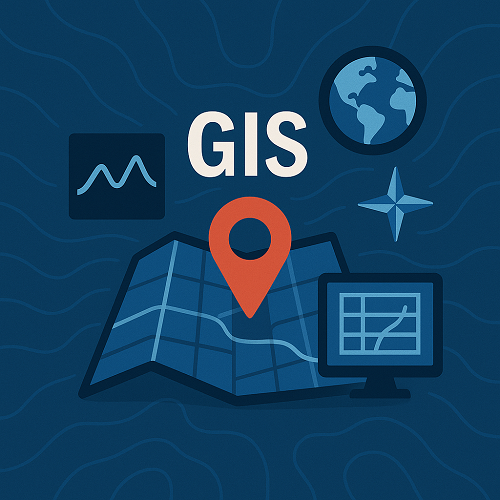TL;DR
- AI-driven analytics are enabling faster and more accurate spatial insights.
- IoT integration is powering real-time GIS applications for cities and industries.
- Blockchain is emerging as a trusted layer for geospatial data verification.
- Open data initiatives are democratizing access to global geospatial intelligence.
- Smart city projects are leveraging GIS for sustainability and efficiency gains.
What’s new right now
In 2025, Geospatial Information Systems are undergoing a significant transformation. Artificial Intelligence (AI) is streamlining spatial data classification and predictive modeling, while real-time networks of IoT sensors are providing unprecedented situational awareness for urban and environmental monitoring. Open data movements, such as Open Geospatial Consortium initiatives, are allowing public and private stakeholders to collaborate on global mapping resources. Blockchain is being used to enhance data traceability, with projects ensuring that location-based information is secure and tamper-proof. AI-powered GIS platforms from leading providers are integrating with live sensor feeds for applications such as traffic optimization, disaster response, and climate monitoring (Esri ArcGIS).
Why it matters
For business leaders, the evolution of GIS means faster decision-making and improved risk management. Real-time data integration can transform logistics, supply chain planning, and asset tracking. From a technical standpoint, AI and IoT-enabled GIS reduces manual intervention, minimizes data latency, and opens possibilities for automation across industries such as agriculture, energy, transportation, and public health. Organizations that adapt early can secure competitive advantages by optimizing their location intelligence strategies.
AI, IoT, and Blockchain in GIS
AI-Driven Insights
Artificial intelligence is now central to modern GIS operations. Machine learning algorithms enhance image classification, anomaly detection, and predictive analytics, making spatial analysis more efficient and less reliant on manual interpretation.
IoT-Enabled Real-Time GIS
When geospatial data is coupled with IoT sensor networks, updates become continuous. These streams can inform emergency dispatchers of changing flood zones, alert maintenance teams to infrastructure failures, or provide live traffic patterns for navigation apps.
Blockchain for Data Integrity
Blockchain ensures that the spatial data lifecycle is transparent. By creating immutable records of data collection and modification, it boosts trust among data providers, regulators, and users.
Comparison: Traditional vs. Emerging GIS Approaches
| Aspect | Traditional GIS | Emerging GIS (AI, IoT, Blockchain) |
|---|---|---|
| Data Updates | Periodic, manual updates | Continuous, automated real-time updates |
| Analysis Speed | Slower, analyst-driven | Immediate, AI-assisted |
| Data Verification | Manual checks and audits | Blockchain-enabled traceability |
| Scalability | Limited to available manpower | Highly scalable with automation |
Mini Case Study: Smart Flood Response System
Problem
A coastal city faced frequent flash flooding, with delayed updates causing slow emergency responses and increased losses.
Approach
The municipal authority installed a network of IoT water level sensors feeding directly into an AI-enhanced GIS platform. Blockchain was used to log sensor data for auditability.
Outcome
Response times improved by 35%, emergency alert accuracy rose by 50%, and flood-related damages decreased by 18% in the first year of deployment.
Implementation checklist
- Assess current GIS infrastructure capabilities and integration potential with IoT devices.
- Identify key datasets for AI-enhanced analysis and prepare data cleaning processes.
- Select a blockchain framework to ensure geospatial data authenticity.
- Deploy IoT devices at strategic locations for live data capture.
- Integrate the real-time feeds into a unified GIS platform with predictive analytics capabilities.
- Monitor performance metrics and refine models based on actual outcomes.
FAQs
What is the main advantage of AI in GIS?
AI reduces manual processing and improves the accuracy and speed of spatial analysis tasks.
How does IoT improve GIS applications?
IoT provides real-time, location-based data that keeps GIS outputs current and actionable.
Can blockchain really secure GIS data?
Yes, blockchain creates immutable data records, reducing the risk of tampering or unauthorized changes.
Is open geospatial data reliable?
While quality varies, reputable open data initiatives ensure standardization and accuracy through community oversight.
Which industries benefit most from IoT-enabled GIS?
Urban planning, logistics, agriculture, energy, and disaster management sectors see significant gains.
How costly is GIS modernization?
Costs depend on project scale, but cloud-based solutions and open data can reduce infrastructure overhead.
Conclusion
The integration of AI, IoT, and blockchain into GIS is reshaping how we capture, process, and act on location intelligence. From faster decision-making to enhanced data security, the benefits are tangible and expanding. Now is the time for organizations to adapt to these changes to stay competitive and resilient — to learn more, explore our GIS services.
